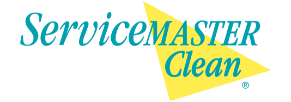A well-documented office cleaning checklist makes it easy to maintain a sanitary work environment that keeps all your employees happy and productive.
One of the first steps toward finding office cleaning services that meet your workplace’s needs is creating a simple cleaning checklist. By documenting the parts of your office that need routine cleaning, you can compare your routine tasks with those covered in a janitorial company’s proposal. You may find that paying a little more for high-quality janitorial services will address your most pressing concerns. Pay close attention to the cleanliness of the objects and locations mentioned below, and be sure to add any that are unique to your office when creating your final office cleaning checklist.
1. Empty trash bins and replace liners.
Failing to empty the trash bins often enough will quickly lead to unpleasant sights and smells in your office. Depending on the location of a particular trash bin and the number of employees who use it, you may need to empty the garbage and replace the liner on a daily basis. For instance, if the bin is in your kitchen, you will want to be sure your office cleaning services provider will complete this task often so that unpleasant food waste is dealt with. Restroom trash bins should also be emptied every day. Bins that are placed in employee cubicles, however, may only need to be handled periodically. For example, liners that are solely used for ordinary paper waste may be emptied of their contents and reused to conserve resources and cut costs.
2. Vacuum and mop floors.
The carpeting and vinyl composition tile (VCT) floors in most office buildings receive a steady stream of foot traffic. To prevent the buildup of unsightly soil, stains, or footprints, you will want to make sure the floors are vacuumed and mopped at least three times per week. Taking proper care of your carpeting and tile is a wise investment that can extend their life and help you avoid a costly replacement before one is due. The employees of professional office cleaning services have expert knowledge on the types of treatments your floors will require and the equipment needed to produce the best possible appearance.
3. Dust horizontal surfaces.
Dusting is one of the most overlooked items for an office cleaning checklist. However, this small task can make the difference between a pristine work environment and one that is covered in a layer of dingy, grey film. The dust that settles on the tables, desks, and countertops of your office is an alarming combination of dead skin cells, mites, fungi. Unless you prioritize weekly dusting of your horizontal surfaces, you put your employees’ health at risk as a result of poor air quality.
4. Sanitize frequently touched surfaces.
Your office is filled with many objects that harbor harmful germs spread through human contact. The University of Arizona published a shocking study revealing that a virus placed on a single door at the entrance of an office can spread to more than 50% of the surfaces inside in hours. This can take a heavy toll on productivity during flu season, when co-workers can easily spread illness through unsanitized areas. Quality cleaning services should involve the use of a nontoxic cleaner on the following surfaces:
- Light switches
- Telephone receivers
- Door knobs
- Coffee stations
- Water fountains
- Vending machine buttons
5. Clean sinks and toilets.
Sinks and toilets must be thoroughly cleaned at least three times a week to prevent odors and stains. Your bathrooms will be used by both employees and any clients who may visit your office, making their care crucial for a positive impression. Aerosolization is a less visible reason you will want professional office cleaning surfaces to care for your facilities. When flushed, a toilet emits a plume of particles that can spread and settle throughout a bathroom. Frequent cleaning is the best way to combat this little-known phenomenon. Kitchen sinks also require weekly attention to prevent soap scum buildup and pest infestations that are related to stray food particles.
6. Wash windows.
Crystal-clear windows are widely considered to be a sign of a professional workplace. While blinds and drapes can be cleaned on a monthly basis, the glass of windows and doors should be wiped down with a standard, streak-free glass cleaner at least once a week to eliminate smudges and dust. More extensive squeegee cleaning that addresses both the inside and outside of windows may be needed periodically.
7. Clean kitchen appliances.
Break room refrigerators and microwaves can quickly become unpleasant if they are not placed on your office cleaning checklist. Food can easily become spattered on both the interiors and exteriors of these kitchen appliances, and their handles can spread bacteria and viruses. Your office cleaning service should only use nontoxic cleaners on these surfaces due to their close proximity to food. You will also need to discuss whether janitors have permission to clean the interior of refrigerators, as this will require them to interact with your employees’ meals to create the cleanest kitchen environment possible.
8. Spot clean walls and painted surfaces.
Walls and other painted surfaces cannot be treated with the same cleaning solutions and frequency as other surfaces in your office, but that does not mean they should go untouched. Cobwebs, fingerprints, and other blemishes can stand out prominently unless they are gently spot cleaned. Your janitorial services provider will know how to remove unsightly stains without removing paint or leaving water marks.
If you are looking for office cleaning services in Central Arkansas, contact ServiceMaster Twin Cities for an estimate. Our professional team is dedicated to meeting your janitorial needs and checking items off your cleaning checklist.

